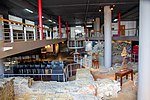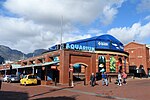Victoria & Alfred Waterfront
Maritime history of South AfricaRedeveloped ports and waterfrontsShopping districts and streets in South AfricaSuburbs of Cape TownTime balls ... and 2 more
Tourist attractions in Cape TownUse South African English from April 2015

The Victoria & Alfred (V&A) Waterfront in Cape Town is situated on the Atlantic shore, Table Bay Harbour, the City of Cape Town and Table Mountain. Adrian van der Vyver designed the complex. Situated in South Africa's oldest working harbour, the 123 hectares (300 acres) area has been developed for mixed-use, with both residential and commercial real estate. The Waterfront attracts more than 23 million visitors a year.
Excerpt from the Wikipedia article Victoria & Alfred Waterfront (License: CC BY-SA 3.0, Authors, Images).Victoria & Alfred Waterfront
Avenida Principal de Caricuao, Caracas Caricuao
Geographical coordinates (GPS) Address Nearby Places Show on map
Geographical coordinates (GPS)
| Latitude | Longitude |
|---|---|
| N -33.903055555556 ° | E 18.422777777778 ° |
Address
Bloque 7
Avenida Principal de Caricuao 7
1000 Caracas, Caricuao
Distrito Capital, Venezuela
Open on Google Maps









